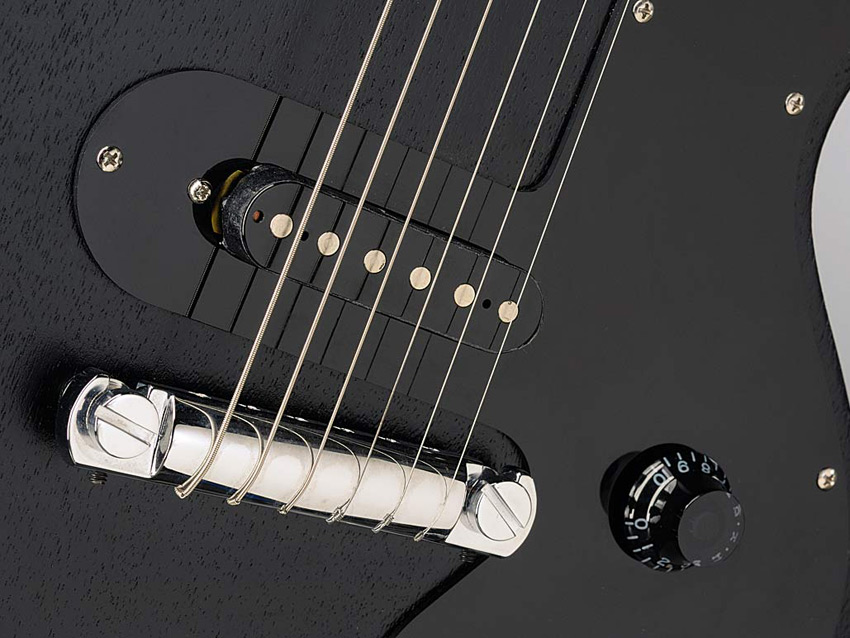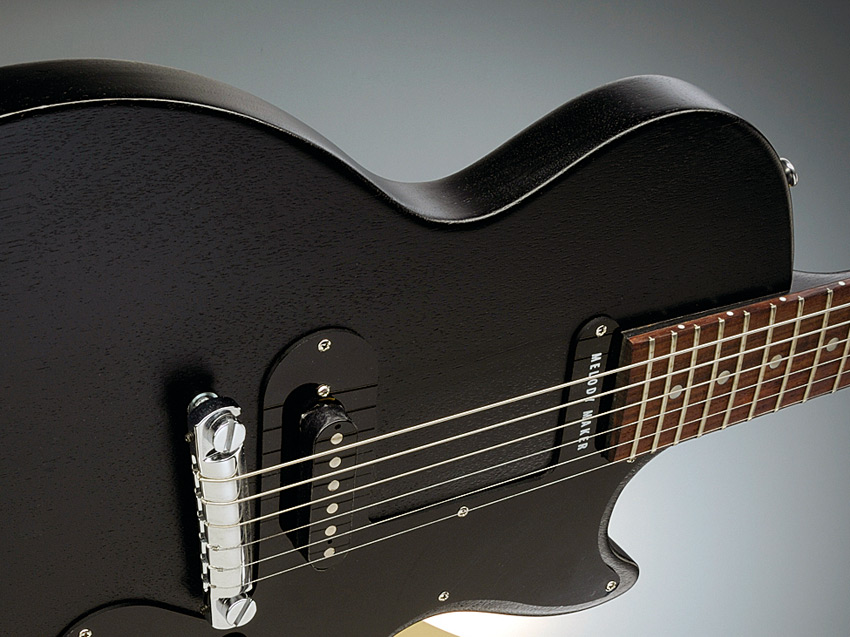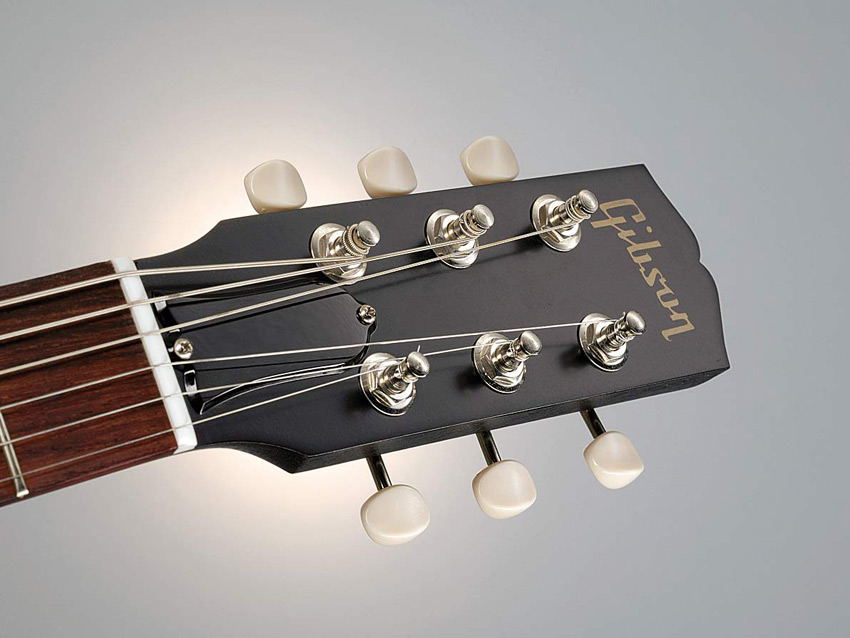MusicRadar Verdict
A close replica of a well-loved Gibson model, what it lacks in constructional class it makes up for in punky attitude. Hard not to like.
Pros
- +
Simplistic design. Okay build. Strong brash tone.
Cons
- -
It feels rather half-finished and not everyone 'gets' single-pickup guitars.
MusicRadar's got your back

Gibson Melody Maker

Gibson Melody Maker

Gibson Melody Maker
Five decades after it first went into production, the Gibson Melody Maker is now back in the stores, after being relaunched in 2007. The Melody Maker first went into production in 1959, following the successful single- and double-cut Junior, TV and Specials, and was priced at $99.50.
Retaining a single-cutaway outline, but with a thinner body and a narrower headstock, the Melody Maker used a single-coil pickup mounted with its two controls and output jack on the scratchplate.
Relaunched line
Gibson has a habit of doing things its own way and this relaunched Melody Maker is a prime example. Instead of releasing it in its Far Eastern Epiphone line, we understand it's made in the same Nashville factory as the production Les Paul.
The fact that it costs about an eighth of what that model does, however, means there must be some very serious cost-cutting!
It's a particularly accurate 'reissue', not least because of that iconic gold logo on the delicate-looking, narrow headstock. The body is much thinner, at 35mm, than a 44mm Junior and it lends the Melody Maker a more SG-like, less centred feel on a strap than a much heavier modern day Les Paul Standard.
Thin finish
The neck joint is rudimentary and left very square, the body edges only slightly radiused, and the sides are left quite square, as if someone ran out of sanding time. At least the deep coloured rosewood 'board is unbound so the frets sit the full width, the ends could do with more rounding but it's an okay job.
Finish material isn't specified (although we'd doubt very much it's cellulose) but it's very thin, the grain is easily visible (as is the off centre joint of the two-piece body) and is already dinged - it's a finish that will age quickly.
Want all the hottest music and gear news, reviews, deals, features and more, direct to your inbox? Sign up here.
Hurried hardware?
Hardware is very basic too, that wrap-over bridge only provides approximate intonation, so it's not a guitar you'd want to play high position, closely voiced chords on. The tuners are standard Gibsons except for the student guitar must-have: cream plastic buttons.
All the controls are mounted on the square-edged single ply black scratchplate with its unique engraved Melody Maker name where the neck pickup should be.
And unlike the covered single-coil design of the original, the pickup on this one looks very much like the single slug-coil of an uncovered humbucker (complete with tape wrapping) with two magnets underneath connecting, P-90-like, to those magnetic slugs. It all seems a bit 'made in a hurry'.
Sounds
Compared to a Les Paul Junior the Melody Maker feels less substantial but kicks out a similarly fulsome tone from the single, quite hot pickup. Definitely in the Gibson camp. And with a strong fundamental and solid mid-range, there's still plenty of edge.
It's not as hot or vicious as the Junior, but it can still handle a lot of styles from ringing sixties clean spank to filthy riffage. There's a nice fight to the guitar too, and with adequate volume and tone controls this has 'gig me' written all over it.
Always affordable, these student guitars occasionally pop up in the hands of a rising or established star - be it Joan Jett's use of the later pointed-shape Melody Maker or Carl Barat's championing of the style we have here.
Despite its faults the Melody Maker is an endearing, good sounding guitar that might not capture the sizzle of a good Junior, but with its bright, ringing tonality it sits well with modern rhythm pop/punk/indie styles and seems well aimed.
It should appeal to older garage-rock and blues fans on a budget. It'd make a very neat slide guitar too.
Dave Burrluck is one of the world’s most experienced guitar journalists, who started writing back in the '80s for International Musician and Recording World, co-founded The Guitar Magazine and has been the Gear Reviews Editor of Guitarist magazine for the past two decades. Along the way, Dave has been the sole author of The PRS Guitar Book and The Player's Guide to Guitar Maintenance as well as contributing to numerous other books on the electric guitar. Dave is an active gigging and recording musician and still finds time to make, repair and mod guitars, not least for Guitarist’s The Mod Squad.
